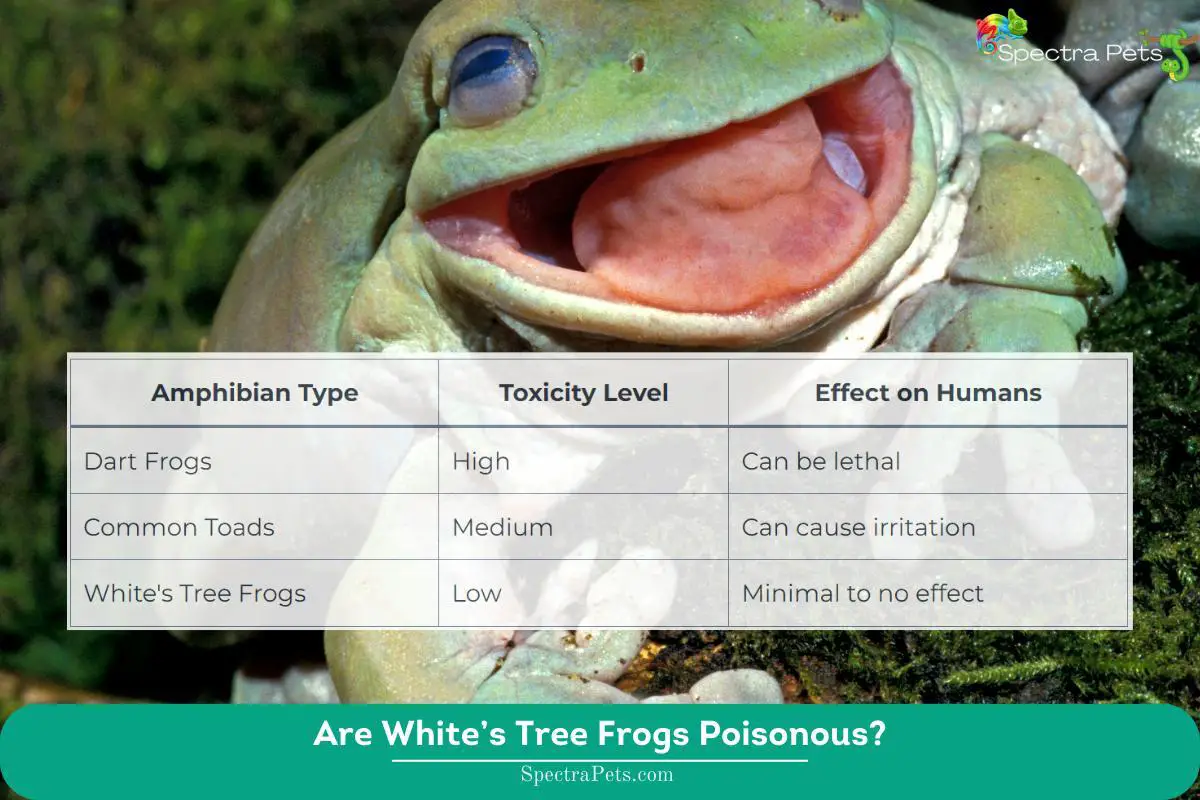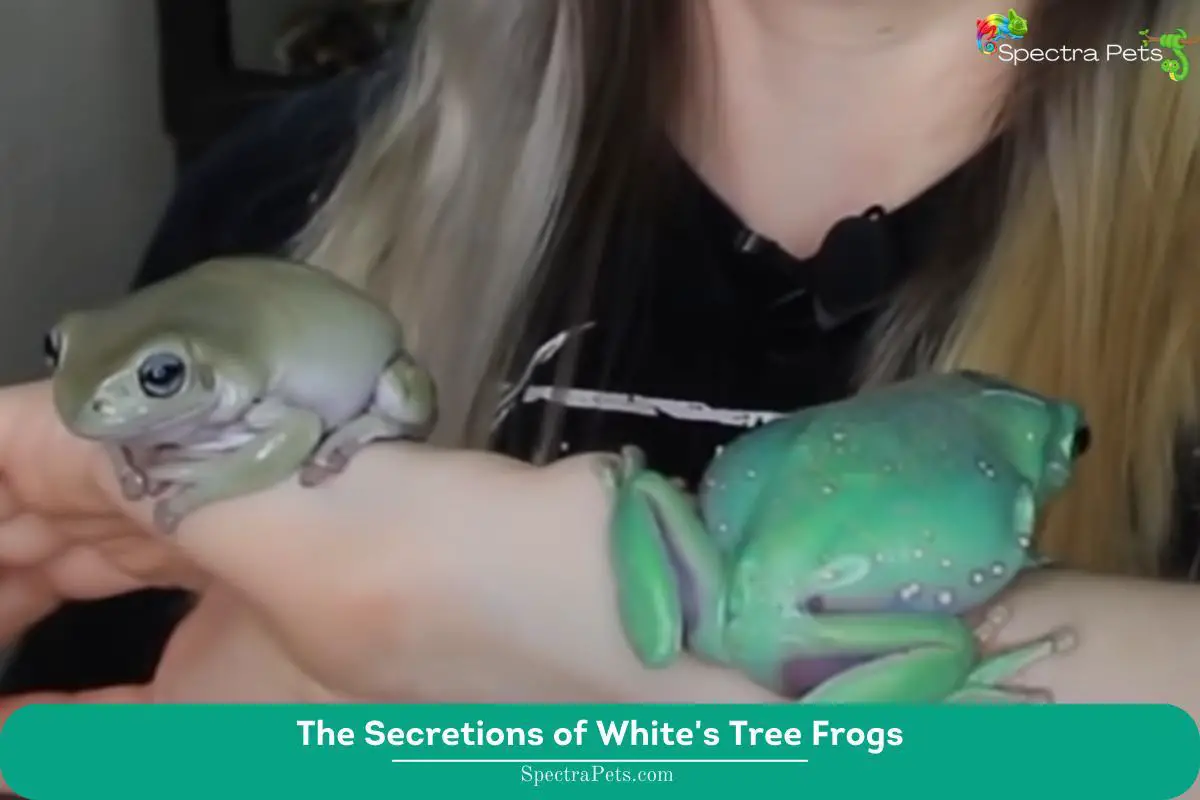White’s Tree Frogs, scientifically known as Litoria caerulea, are a captivating species of arboreal amphibians native to Australia and New Guinea. With their vibrant hues and distinctive appearance, they have become a subject of intrigue for herpetologists, researchers, and pet enthusiasts alike. Studies from institutions like the University of Sydney have delved into the unique biology of these frogs, particularly their skin secretions and potential medical applications.
Are White’s Tree Frogs poisonous? The definitive answer is no. While they produce skin secretions, these are not inherently harmful to humans. However, direct contact can cause mild skin irritations in some individuals, and there’s a potential risk of Salmonella transmission, a concern common to many reptiles and amphibians.
This article offers a comprehensive exploration of White’s Tree Frogs, from their toxicity levels to comparisons with other tree frog species. With a blend of scientific insights and practical information, you will gain a deeper understanding of these remarkable creatures and their place in the natural world.
Are White’s Tree Frogs Toxic?
Before I start, just remember, the White tree frogs and White’s tree frogs are not the same. White’s tree frog is better known as Australian green tree frog, and they don’t even look white! Mr. John White was the first person to discover them, hence the namesake.
White’s Tree Frogs are tree frogs of the Hylidae family that have recently seen a massive increase in popularity as pet frogs. These amphibians are pretty easy to maintain and prefer habitats near water bodies because they need to maintain moisture in their skin.
Their docile nature and striking appearance make them a favorite among enthusiasts. But, are they poisonous?
Amphibians, particularly frogs, have evolved various mechanisms to protect themselves from predators. One such mechanism is the production of toxins. These toxins can range from mildly irritating to deadly.

Unlike some of their more colorful counterparts, White’s Tree Frogs do not produce potent toxins. Their bright coloration might suggest otherwise, but in reality, they pose little to no threat to humans.
Key Points:
- Color Misconception: Bright colors in nature often signal danger. However, in the case of White’s Tree Frogs, this is more about camouflage in their natural habitat than a warning.
- Handling: While they aren’t poisonous, it’s always a good practice to wash hands after handling any amphibian to prevent potential skin irritations or bacterial transmission.
This species, however, carries salmonella bacteria. Therefore, be careful of getting a salmonella infection when handling them.
The Secretions of White’s Tree Frogs
The skin of White’s Tree Frogs is not just for show. It serves multiple purposes, from hydration to protection. One of the most intriguing aspects of their biology is the secretions they produce.
White’s Tree Frogs, like many amphibians, have specialized glands in their skin. These glands produce a variety of secretions. Some of these secretions help the frog retain moisture, while others act as a deterrent to predators.
| Secretion Type | Purpose | Effect on Humans |
|---|---|---|
| Mucous | Keeps the skin moist | Harmless |
| Granular | Potential deterrent to predators | Can cause irritation |
Recent studies, especially from Australian institutions, have shown that the secretions of White’s Tree Frogs might have antibacterial properties. While the research is still in its early stages, there’s potential for these secretions to be used in medical applications. Preliminary studies suggest that certain compounds in the frog’s secretions can combat specific strains of bacteria.
While the secretions of White’s Tree Frogs are not inherently harmful, direct contact can cause mild skin irritations in some individuals. It’s always recommended to handle these frogs with care and to wash hands thoroughly afterward.
Tips for Safe Handling:
- Avoid touching your face, especially eyes and mouth, after handling the frog.
- If you notice any skin irritation, wash the affected area with soap and water.
- Always supervise children when they are interacting with any amphibian.

Related Articles:
Comparing White’s Tree Frogs to Other Tree Frogs
The world of tree frogs is vast and diverse. While White’s Tree Frogs are among the most recognized, there are numerous other species, each with its unique characteristics.
Toxicity Across Species
Different tree frog species have evolved various defense mechanisms, including the production of toxins.
| Tree Frog Species | Region | Toxicity Level | Effect on Humans |
|---|---|---|---|
| Dart Frogs (e.g., Golden Poison Dart Frog) | Central/South America | High | Can be lethal due to batrachotoxin |
| Common European Tree Frog | Europe | Low | Minimal to no effect |
| Red-Eyed Tree Frog | Central America | Medium | Can cause mild irritation due to skin secretions |
| White’s Tree Frog | Australia/New Guinea | Low | Minimal to no effect |
| Glass Frogs (e.g., Fleischmann’s Glass Frog) | Central/South America | Low | Transparent skin but no harmful toxins |
| Waxy Monkey Tree Frog | South America | Medium | Produces secretions that can be irritating |
| Amazon Milk Frog | South America | Low | Named for milky secretions, but not harmful to humans |
| Barking Tree Frog | North America | Low | Named for its call; no significant toxins |
| Pine Barrens Tree Frog | North America | Low | Vibrant coloration but minimal toxicity |
| Harlequin Tree Frog | Southeast Asia | Medium | Brightly colored and can produce irritating secretions |
Related Article: World’s Most Deadly Frogs (Top 5)!
Are White’s Tree Frogs poisonous to dogs?
When dogs attempt to swallow frogs, they frequently display symptoms of vomiting and diarrhea. When threatened, frogs typically release toxins from their skin, rendering your pet dog intoxicated.
The White’s Tree Frog shows similar behavior. Their toxin is harmless, however. If your dog shows signs of sickness after coming in contact with the White’s, there may be another reason behind this and you should immediately contact a vet.
Summary
White’s Tree Frogs, with their captivating appearance and intriguing biology, are truly remarkable creatures. While not poisonous, they offer a world of discovery, from their unique secretions to their role in the ecosystem. Whether you’re a budding herpetologist, a pet enthusiast, or just curious, understanding these frogs is a journey worth taking.
